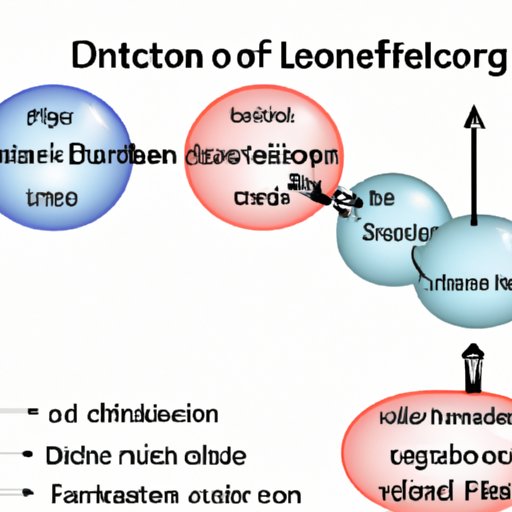Introduction
London dispersion forces are a type of intermolecular force that plays a role in various chemical and physical processes. These forces are particularly critical when it comes to understanding the properties of nonpolar substances. In this article, we will explore the unique properties and characteristics of substances that exhibit only London dispersion forces, and why understanding these forces matters in chemistry.
Understanding London Dispersion Forces: A Comprehensive Guide
London dispersion forces, also known as instantaneous-induced dipole forces, are a type of intermolecular force that occurs between all molecules and atoms. They are the weakest type of intermolecular force, but still play a vital role in various chemical and physical processes. London dispersion forces occur due to the temporary polarization of electrons within a molecule or atom.
There are different types of intermolecular forces, which include Van der Waals forces, hydrogen bonding, and dipole-dipole forces. London dispersion forces are a subtype of Van der Waals forces. Van der Waals forces are further subdivided into London dispersion forces, dipole-dipole forces, and dipole-induced dipole forces.
The way London dispersion forces work is that they occur when the electrons in one molecule shift their position relative to the position of the electrons in a neighboring molecule, creating a temporary dipole resulting in temporary electrostatic attractions between the molecules. This effect is known as instantaneous-induced dipole attraction, and it occurs even in nonpolar substances.
Exploring the Unique Properties of Nonpolar Substances: London Dispersion Forces
Nonpolar substances are substances that do not have any significant electrical charges and do not dissolve in polar solvents. In nonpolar substances, the only intermolecular force operative is the London dispersion force. The importance of London dispersion forces in nonpolar substances is due to the fact that while other substances, like polar molecules, can exert dipole-dipole interactions and hydrogen bonding, nonpolar substances lack the capability for these intermolecular forces.
Examples of substances that exhibit only London dispersion forces include noble gases such as helium, neon, and argon. The size of the electron cloud in these substances increases with atomic number, meaning that the London dispersion forces also increase in strength. Other examples of nonpolar substances that exhibit only London dispersion forces include hydrocarbons such as methane, propane, and butane.
Why London Dispersion Forces Matter in Chemistry
London dispersion forces play a vital role in chemical reactions, particularly in the formation of molecular compounds. Although London dispersion forces are the weakest type of intermolecular force, they still influence the physical properties of a substance, such as melting point, boiling point, and surface tension.
For example, the strength of London dispersion forces in hydrocarbons increases as the molecular weight increases. Consequently, the boiling point of hydrocarbons also increases with molecular size, with larger hydrocarbons requiring more energy to overcome these intermolecular forces before boiling.
The Role of London Dispersion Forces in Intermolecular Interactions
London dispersion forces also play a significant role in intermolecular interactions between different substances. These interactions occur between molecules of different substances, influencing the behavior of substances in heterogeneous environments and chemical reactions.
London dispersion forces are affected by the molecular structure and composition of substances. Generally, the larger and more complex the molecule, the stronger the London dispersion forces become. Polymers, for example, exhibit very strong London dispersion forces due to their large and complex molecular structures.
The Significance of Molecular Size and Shape in London Dispersion Force
Molecular size and shape are crucial when it comes to London dispersion forces. The size and shape of the molecule determine the magnitude of the London dispersion force and the extent to which this force influences the chemical and physical behavior of substances.
Branched chains and cyclic molecules have a lower surface area than linear chains, which reduces the number of points of contact. Consequently, these types of molecules tend to have weaker London dispersion forces compared to linear chains of similar molecular weight.
Real-world Applications of London Dispersion Forces in Science and Industry
London dispersion forces have many real-world applications in science and industry. In biology, these forces are important in determining protein structure and function. In materials science, London dispersion forces play a role in the design of new materials, such as polymers, and the creation of adhesives.
London dispersion forces also play an essential role in fuel production and refining. For instance, crude oil refineries use London dispersion forces to separate hydrocarbon compounds of different molecular weights, making it easier to extract useful fuels such as petrol and diesel.
Conclusion
Overall, London dispersion forces are a crucial type of intermolecular force that plays a role in various chemical and physical processes. These forces are particularly essential in nonpolar substances and contribute to the unique properties and characteristics of these substances.
Understanding London dispersion forces is crucial in various scientific and industrial applications, from protein purification to oil refinery processing. Therefore, it’s essential to continue studying these forces and their effects on the chemical and physical behavior of substances.
